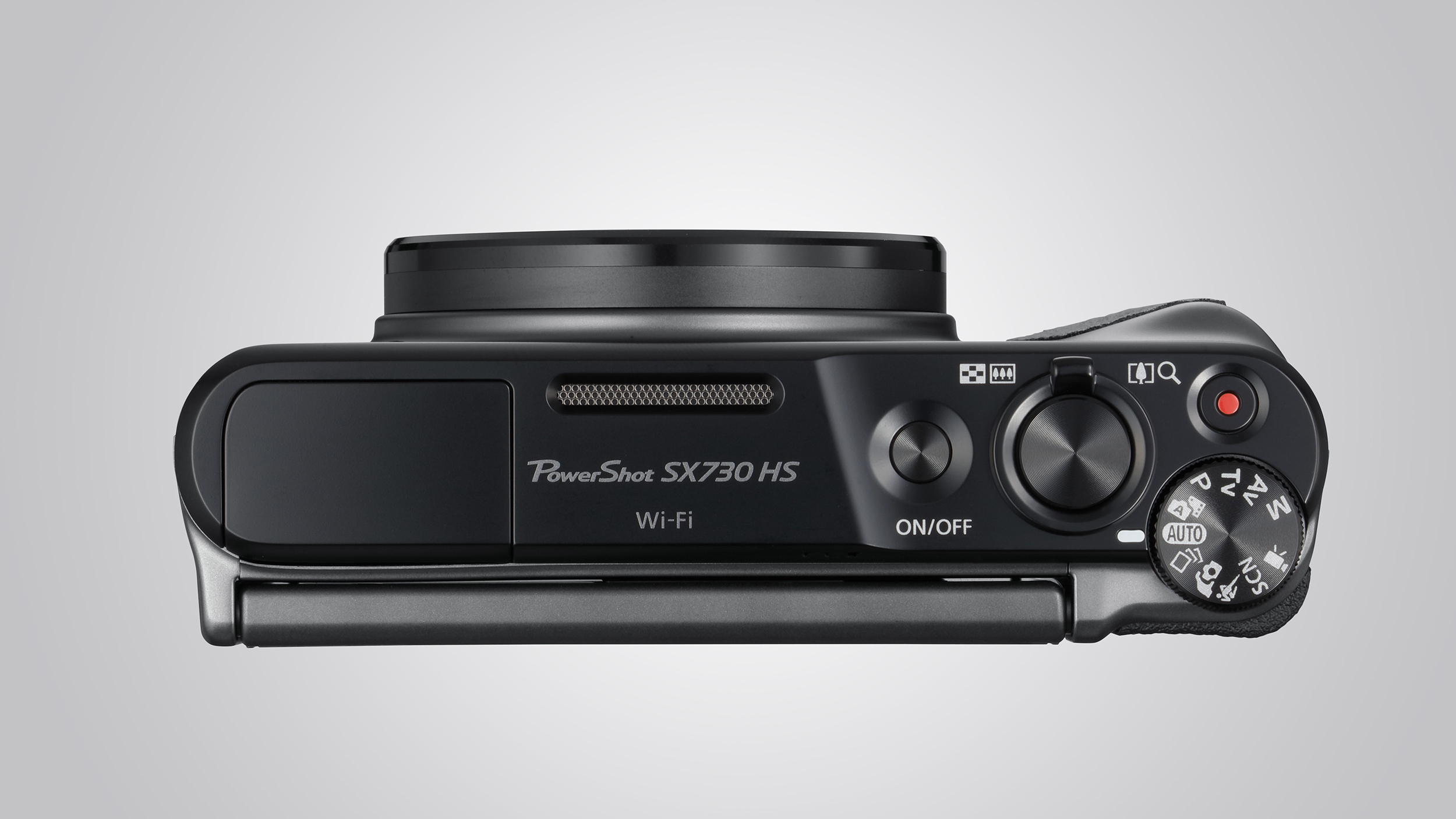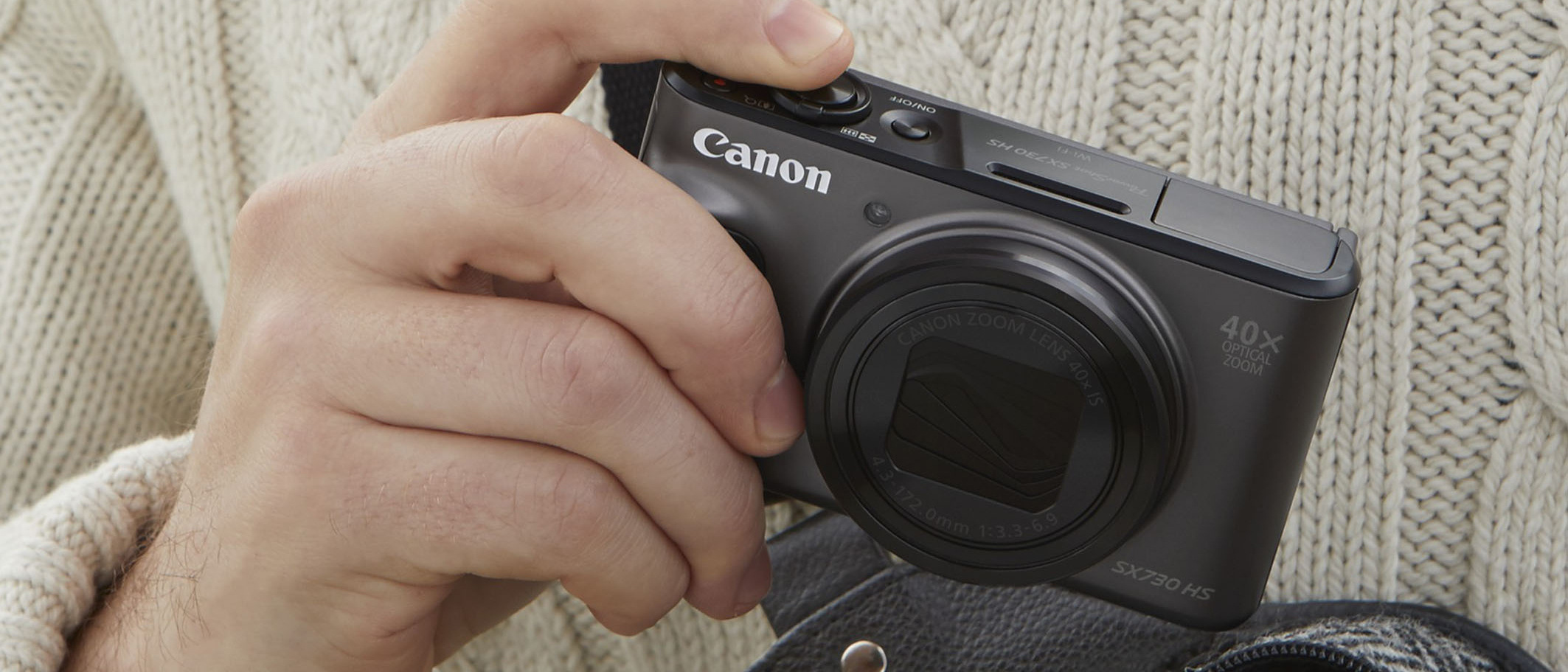Why you can trust TechRadar
Build and handling
- Metal and polycarbonate construction
- Compact rear control dial
- Weighs 300g
The Canon PowerShot SX730 HS's body is a polycarbonate construction, with a pleasantly textured rubber around the grip and thumb rest. The casing’s smooth finish feels refined rather than cheap, while the LCD screen feels securely attached to the body, in contrast with some other models at this level, whose hinges feel flimsier.
As is fairly common on such cameras, the LCD screen is mounted on a single hinge, which means it only moves upwards. This makes it less flexible when shooting above head height, but this is a minor point. In any case, the overall impression is a camera that’s built sturdily, with no obvious points of weakness and dimensions that allow it to slip into a pocket where some rivals would be too large.

The trade-off for incorporating an LCD of this size and type on such a small body is that the rear control dial is a little small. This, combined with the fact that it's slightly recessed into the backplate, rather than flush with the level of the screen, means it’s difficult to turn without hitting the side of the LCD. Pulling the LCD screen upwards a little is one way to get around this.
Autofocus
- 9-point system (non-addressable points)
- Face Detection AF
- Tracking
The PowerShot SX730 HS uses a fairly standard contrast-detect AF system, with nine areas available when it's set to its automatic option. It can employ face detection to help focus on people more accurately, and you can choose between normal and small sizes for the central focusing point to help you focus more accurately.
AF Tracking and continuous focus are on hand, as is a macro mode that lets you shoot from 1cm away from the subject. There’s also a manual focus option that impressively goes as far as offering focus peaking.
Autofocus performance is generally very good. The PowerShot SX730 HS is able to acquire focus almost instantly at the wide-angle end of the lens, often doing so as you press the shutter release button fully down, with no need to pause halfway. When zoomed to the telephoto end of the lens, as with other similar compacts the AF system will adjust the focus of its own accord given time, but when the shutter release button is half-pressed acquisition is again rapid.

In moderate and low lighting the bright green AF assist light springs to life quite readily, and this helps to reduce focusing times. The noise visible on the screen in these kinds of conditions can make it a little more difficult to assess focus accurately, but if you leave the camera to its own devices and watch out for the image stabilization warning icon, you'll generally end up with acceptably sharp results.

It’s a shame the PowerShot SX730 HS's screen isn't touch-sensitive, as this would make focusing on specific parts of the scene, such as those where it's harder for the camera to identify detail, easier in certain situations, but it isn’t a critical omission. This is more problematic if you want to operate the camera while taking a selfie, however, and the fact that you can't manually move the focusing point in any way is disappointing.
Current page: Build, handling and AF
Prev Page Introduction and key features Next Page Performance and image quality